Does Cerebral Palsy Cause Autism?
Examining Co-occurrence and Causes
The relationship between cerebral palsy (CP) and autism spectrum disorder (ASD) has garnered increasing research interest. While these are distinct neurological conditions affecting different aspects of development, evidence suggests they can coexist and share underlying factors. This article explores whether cerebral palsy causes autism, the nature of their association, and how to differentiate and manage children with both conditions.
The Nature of Cerebral Palsy and Autism
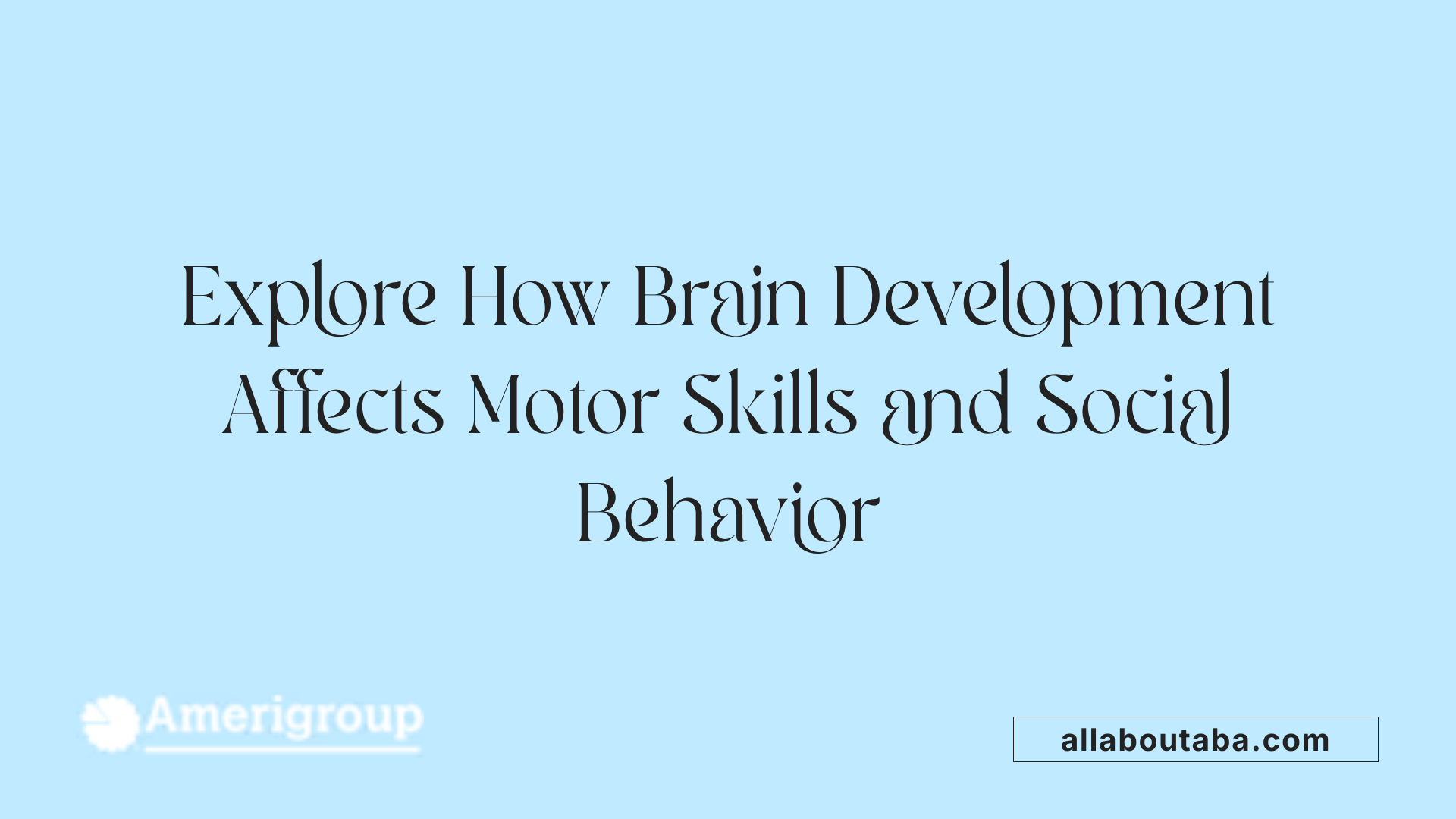
Overview of cerebral palsy and autism
Cerebral palsy (CP) is a neurological disorder caused by brain damage occurring before, during, or shortly after birth. It primarily affects motor skills, leading to issues such as muscle stiffness, weakness, and abnormal movements. Children with CP may experience delayed motor development, abnormal gait, or muscle spasms.
Autism spectrum disorder (ASD), in contrast, primarily impacts social interactions, communication, and behavior. Children with autism often face challenges in understanding social cues, engaging in typical social activities, and may exhibit repetitive behaviors or sensory sensitivities.
Both conditions are complex and stem from differences in brain development. While they affect different functions—motor control in CP and social/behavioral skills in autism—they frequently coexist, especially in children with certain types of cerebral palsy.
Neurodevelopmental impact of each condition
Cerebral palsy results from brain damage affecting areas responsible for controlling voluntary movements. This damage can impair the development of muscle coordination, balance, and posture. Symptoms include muscle stiffness or floppiness, uncontrolled movements, and sometimes cognitive or speech impairments.
Autism involves atypical development of neural pathways that influence cognitive and social skills. It affects how the brain processes sensory information, leading to behaviors such as extreme sensitivity to lights or sounds. People with autism may also experience delays in language development and difficulties in understanding social cues.
Studies show that about 7% of children with CP also have autism, a rate significantly higher than in the general population, which is approximately 1%. This overlap indicates shared developmental disruptions or genetic factors that influence early brain development.
Distinct features and affected brain functions
Cerebral palsy mainly affects motor functions, with symptoms like delayed walking, muscle spasms, or poor coordination. These impairments stem from damage to motor control regions of the brain.
Autism primarily affects behavioral and social brain circuits, impacting speech, social understanding, and sensory processing. Children with autism may be unable to make eye contact, interpret social cues, or may engage in repetitive behaviors.
Despite their differences, both conditions can involve abnormal movements or developmental delays. For example, some children with autism may exhibit unusual motor patterns, and those with CP often show signs of social or sensory difficulties.
Understanding the overlap and distinctions helps in designing comprehensive assessments and tailored interventions for children with both conditions.
| Aspect | Cerebral Palsy | Autism Spectrum Disorder | Shared Factors and Co-occurrence |
|---|---|---|---|
| Main Impact | Motor skills | Social, communication, and behavior skills | Possible shared genetic variants and early brain development abnormalities |
| Typical Symptoms | Muscle stiffness, weakness, abnormal gait | Repetitive behaviors, sensory sensitivities | Co-occurs more frequently in children with non-spastic CP, especially hypotonic types |
| Brain Areas Affected | Motor control regions | Social and sensory processing areas | Brain injury, changes in brain connectivity, or common environmental influences |
| Diagnostic Challenges | Movement limitations complicate ASD diagnosis | Social behavior impairments may mask motor issues | Need for comprehensive, multidisciplinary evaluation and customized therapies |
Understanding these distinctions and overlaps emphasizes the importance of early, integrated intervention strategies. Recognizing signs of both conditions allows for more targeted therapies that address each child's unique needs.
Causality Versus Association: Do They Influence Each Other?
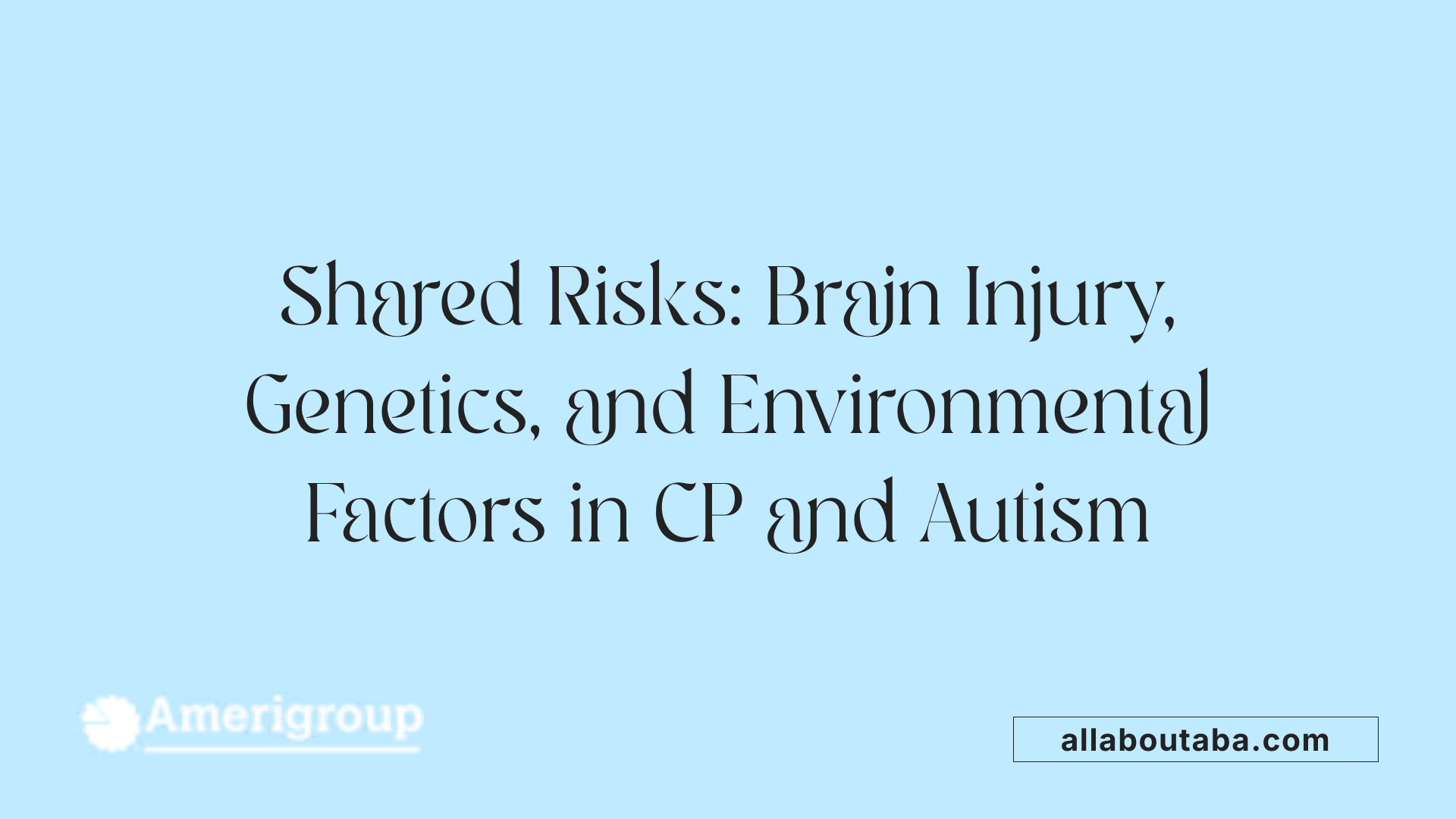
Understanding if CP causes autism
Cerebral palsy (CP) and autism spectrum disorder (ASD) are distinct neurological conditions. CP primarily impacts motor skills, muscle control, and movement, caused by brain damage before, during, or shortly after birth. Autism mainly affects social interactions, communication, behavior, and sensory processing. Importantly, CP does not directly cause autism. Instead, the two can co-occur more frequently than by chance.
Studies show that about 7% of children with CP also have autism, a rate significantly higher than the approximately 1% prevalence in the general population. This increased association suggests a relationship but not causality. Children with certain types of CP, especially non-spastic forms like hypotonic CP, are more frequently diagnosed with autism.
Research on shared risk factors
The link between CP and autism is believed to stem from shared developmental pathways and risk factors. Both conditions involve brain development abnormalities, possibly influenced by genetic, environmental, or biological factors. Evidence indicates that specific genetic variants may impact brain development processes common to both disorders.
Shared prenatal, perinatal, or early postnatal factors can also play a role. For example, brain injuries due to oxygen deprivation, infections, bleeding, or trauma occurring around birth can contribute to both CP and autism. These shared influences suggest that some children are vulnerable due to compromised early brain development, leading to overlapping features.
Brain injury, genetic and environmental influences
Brain injury is a common contributor to CP, often resulting from issues like prematurity, lack of oxygen, or bleeding in the brain. Such injuries can disrupt normal neural connections and motor pathways, explaining the motor impairments characteristic of CP.
Genetic factors are increasingly recognized in both conditions. Certain genetic variants may predispose children to developmental issues affecting both motor and social skills. Environmental exposures, such as prenatal exposure to chemicals, parental age, or infections, further increase risk.
While these factors do not cause autism or CP directly, they influence early brain development. Consequently, children with brain damage or certain genetic backgrounds are more likely to develop both conditions, highlighting the complex interplay of causative factors.
| Aspect | Explanation | Impact on Co-occurrence |
|---|---|---|
| Brain injury | Damage around birth affects motor and cognitive pathways | High; common cause of CP and contribues to autism risk |
| Genetic variants | Certain mutations influence brain development | Adds to vulnerability for both conditions |
| Environmental factors | Prenatal chemical exposure, infections, head injury | Shared risk factors may increase co-occurrence |
In summary, while cerebral palsy does not directly cause autism, the overlapping risk factors and developmental pathways often lead to children being diagnosed with both conditions. Understanding these shared influences is crucial for early intervention and tailored support.
Prevalence and Co-morbidity of CP and Autism
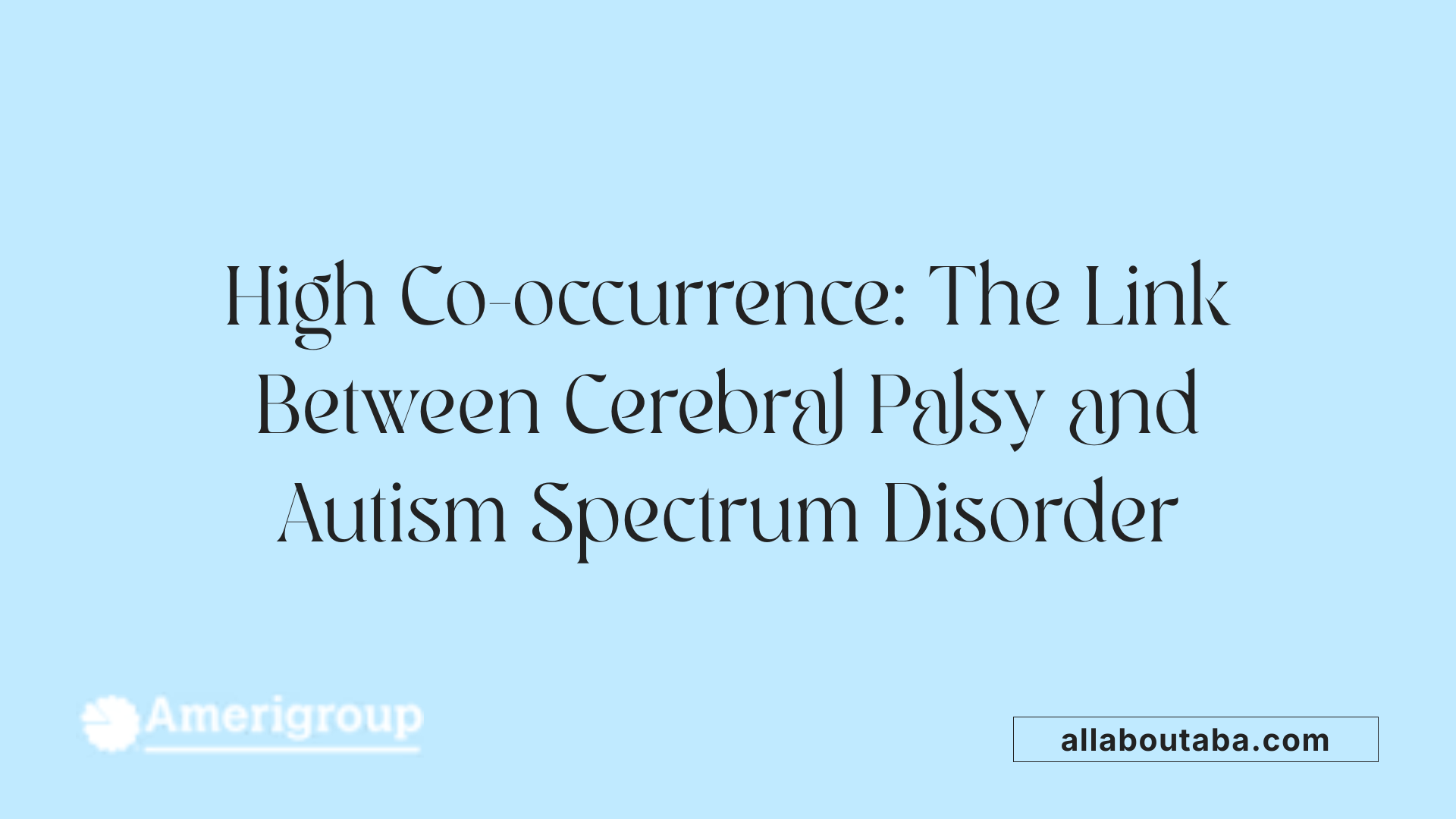
How often do cerebral palsy and autism co-occur or have a correlation?
Cerebral palsy (CP) and autism spectrum disorder (ASD) often occur together, with about 7% of children with CP also diagnosed with autism. Studies reveal that children with CP are roughly three to four times more likely to have ASD compared to children in the general population, where autism prevalence is around 1%. The higher co-occurrence is especially notable in children with non-spastic cerebral palsy, particularly the hypotonic subtype.
The shared developmental and genetic factors may explain this link. For example, certain genetic variants might influence brain development pathways affecting both conditions. Brain injuries or changes in neural connections in early development also contribute to the overlapping symptoms and increased risk.
This association has significant implications for diagnosis and treatment. Because symptoms overlap, such as delayed speech, abnormal motor patterns, or sensory sensitivities, differentiating between the two can be challenging. Screening for autism is crucial for children with CP, especially those with non-spastic forms, to ensure timely interventions.
Overall, the data emphasizes that children with CP are at a heightened risk for autism, underlining the importance of comprehensive developmental assessments to support optimal outcomes.
Key Differences and Similarities in Symptoms
What are the key differences and similarities between cerebral palsy and autism?
Cerebral palsy (CP) and autism spectrum disorder (ASD) are two separate neurological conditions, each affecting different aspects of development. CP mainly impacts motor skills—such as movement, muscle control, and posture—due to brain damage that occurs around the time of birth. Children with CP often display symptoms like muscle stiffness or floppiness, abnormal walking patterns, and delayed motor development.
In contrast, autism primarily influences behavior, communication, and social interactions. Children with ASD may have difficulty understanding social cues, engaging in repetitive behaviors, or speech delays. Sensory sensitivities are also common, such as being overwhelmed by bright lights or loud noises.
Despite their differences, the two conditions sometimes occur together. Studies suggest that around 7% of children with cerebral palsy also have autism, particularly more frequent in those with non-spastic or hypotonic CP. This overlap might be linked to shared developmental factors, such as brain injury or genetic predispositions.
Overlapping symptoms can make diagnosis challenging. For instance, delays in speech, unusual movements, or atypical gait can be present in both conditions. Standard diagnostic tests for autism, which often involve assessments of social skills and communication, may be complicated by motor impairments in children with CP.
Understanding these differences and similarities is crucial for developing appropriate treatment approaches. Management often involves a combination of therapies—physical, occupational, speech, and behavioral—to support each child's unique needs.
In summary, CP impacts how children move and control their body, while autism affects how they interact and communicate. Awareness of their distinctions helps ensure children receive proper diagnosis, intervention, and support, fostering better developmental outcomes.
Symptoms, Diagnostic Challenges, and Overlapping Signs
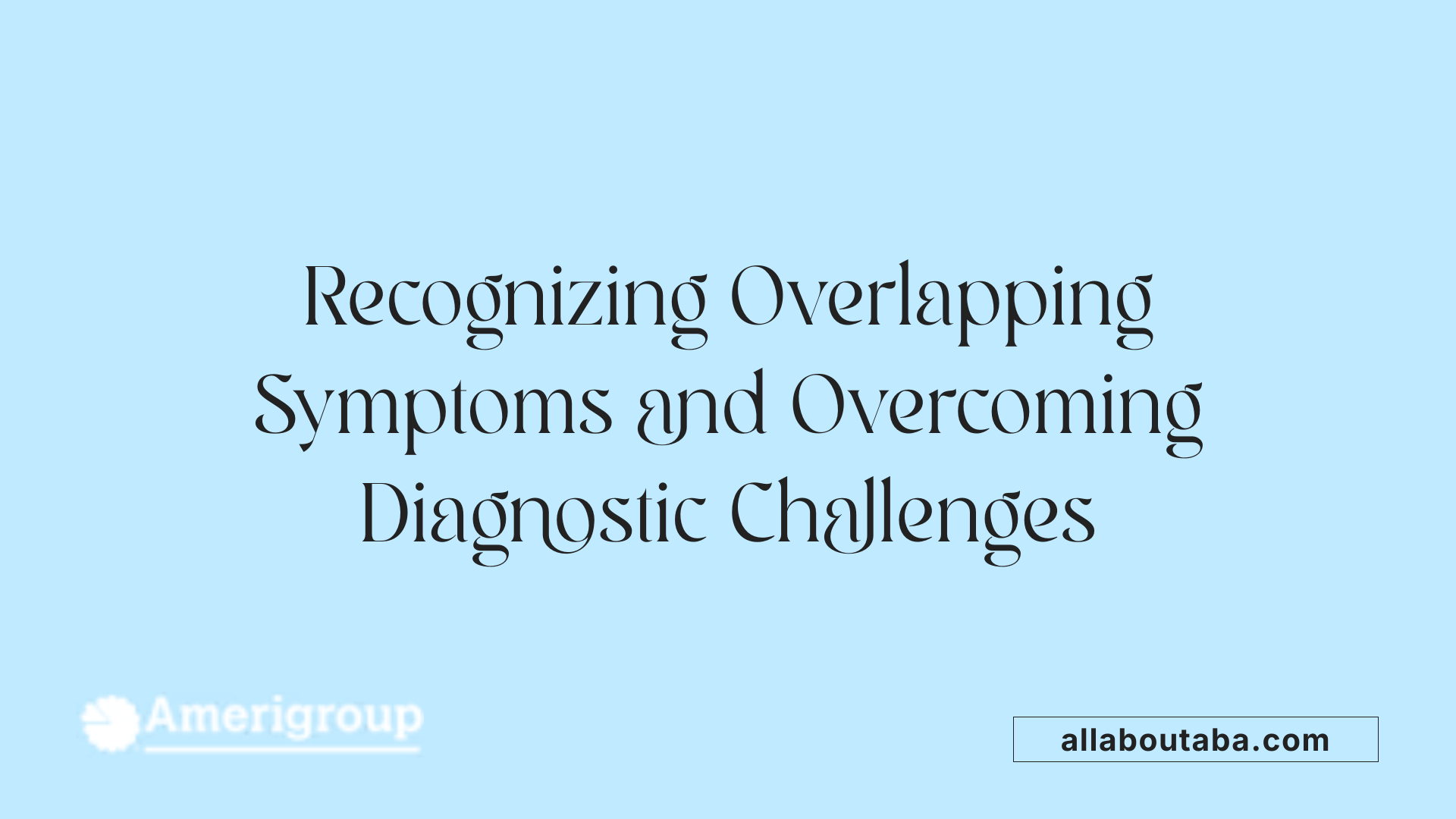
What symptoms are associated with cerebral palsy and autism, and what are the challenges in diagnosing these conditions?
Children with cerebral palsy often display motor impairments such as abnormal gait, muscle stiffness or floppiness, weak limbs, uncontrolled movements, muscle spasms, tremors, and walking on tiptoes. They may also experience delays in reaching developmental milestones, speech and swallowing difficulties, and poor coordination.
On the other hand, autism spectrum disorder is primarily characterized by social and behavioral symptoms. These include poor eye contact, difficulties understanding social cues, delays in speech development, repetitive behaviors, sensory sensitivities, and trouble engaging in typical social interactions.
When these conditions occur together, children may show overlapping signs. For example, both may present with delayed speech and language development, atypical motor behaviors, or sensory processing issues. Some children with both conditions might also exhibit unusual movement patterns, like awkward or repetitive motions, which complicate accurate diagnosis.
Diagnosing autism in children with cerebral palsy presents unique challenges. Standard autism assessments often involve motor tasks that may not be suitable for children with CP, especially when motor impairments limit participation. Differentiating behaviors attributable to each condition can be difficult—what might be a motor impairment in CP could look like a social or communicative difficulty seen in autism.
To address these challenges, multidisciplinary evaluations are essential. These might include physical and developmental assessments, speech and language evaluations, and behavioral observations. The goal is to distinguish behaviors linked to each condition while considering the child's overall developmental profile.
Early and accurate diagnosis is critical for tailoring effective interventions. Despite the complexity, understanding and recognizing the signs of both CP and autism can help in providing appropriate support, improving functional outcomes, and enhancing quality of life for affected children.
More information on this topic can be found by searching for "diagnostic challenges in cerebral palsy and autism."
Research Insights into Prevalence and Associated Factors
What does current research say about the prevalence and co-morbidity of cerebral palsy and autism?
Recent studies reveal that children with cerebral palsy (CP) are more likely to also have autism spectrum disorder (ASD) and other neurodevelopmental conditions compared to their peers in the general population. Data from US-based research shows that approximately 6.9% of children with CP are diagnosed with ASD, which is significantly higher than the roughly 1.9% prevalence in the general population. This increased risk highlights a notable co-occurrence that warrants attention from healthcare providers.
Children with CP and ASD often face greater challenges in mobility, communication, and behavioral regulation. The co-morbidity is especially pronounced in children with non-spastic CP, particularly the hypotonic type, where the prevalence of autism can reach around 18.4%. Furthermore, nearly 41% of children with CP and seizure disorders also have autism, suggesting overlapping neurological vulnerabilities.
Statistically, children with CP are about five times more likely to have ASD than children without CP. Similarly, the study indicates that children with CP have nearly twice the odds of developing attention-deficit/hyperactivity disorder (ADHD), with about 15.91% affected. These figures underscore a complex clinical picture where multiple neurological and behavioral disorders coexist, impacting diagnosis and management.
While the overall rate of CP remains stable at around 3.1 per 1000 children, the co-occurrence with ASD and ADHD emphasizes the importance of early screening. This is crucial because symptoms such as delayed speech, abnormal movements, and sensory sensitivities are common in both conditions, complicating differential diagnosis.
These insights point to shared early-life risk factors and potential common pathways in brain development disruptions. It stresses the need for tailored diagnostic tools and intervention strategies to better support children with these co-occurring conditions. Ongoing research continues to investigate the genetic, environmental, and developmental factors that contribute to this link, aiming to improve outcomes for affected children.
Distinguishing Features and What They Tell Us
Motor signs of CP
Cerebral palsy (CP) mainly manifests through motor impairments that affect movement, posture, and muscle control. Common signs include muscle stiffness or floppiness, weak limbs, abnormal walking patterns such as toe walking, involuntary movements, tremors, and muscle spasms. Atypical gait or movements are often prominent and can be observed early in development. These motor signs are typically linked to brain damage occurring before, during, or shortly after birth.
Behavioral signs of autism
Autism spectrum disorder (ASD) impacts social interactions, communication, and behavior. Children with autism often experience delayed speech development, difficulty understanding social cues, poor eye contact, and challenges with receptive and expressive language. Repetitive behaviors, sensory sensitivities (such as sensitivity to lights or sounds), and a preference for routines are also characteristic. Unlike CP, autism's core features revolve around social and behavioral skills rather than motor abilities.
Guidance for differentiation
Differentiating CP from autism involves observing specific patterns. CP's hallmark motor signs, such as abnormal gait, muscle tone issues, or involuntary movements, set it apart. Autism's primary signs include social skill deficits, communication delays, and repetitive behaviors. However, some children exhibit overlapping features like delayed speech or unusual movements, complicating diagnosis.
When children present with both motor impairments and social-communication difficulties, clinicians consider the possibility of co-occurrence. Diagnosis often involves detailed behavioral assessments and motor evaluations.
It's important to note that children with CP may have limited social skills due to motor challenges affecting facial expressions and speech, making autism harder to identify. Conversely, children with autism might display movement irregularities, such as repetitive motions, but without the typical motor impairments seen in CP.
In summary, understanding the different presentations of each condition helps tailor effective interventions. Early and accurate diagnosis ensures children receive therapies suited to their specific needs, whether focusing on mobility, communication, or social skills.
Concluding Insights and Future Directions
While cerebral palsy does not cause autism, the two conditions share overlapping features and developmental pathways that increase the likelihood of co-occurrence. Advancements in early diagnosis, understanding shared genetic and environmental factors, and tailored interventions are essential for improving outcomes. Recognizing their distinct mechanisms yet interconnected impacts fosters more accurate diagnosis, better support strategies, and targeted therapies. Continued research is vital to unravel the complex relationship between CP and autism, ultimately leading to more effective management and a deeper understanding of neurodevelopmental disorders.
References
- Cerebral Palsy and Autism Spectrum Disorder
- Cerebral Palsy and Autism | Birth Injury Center
- The connection between cerebral palsy & autism | Patient Claim Line
- Association of cerebral palsy with autism spectrum disorder and ...
- Cerebral Palsy and Autism | Birth Injury Justice Center
- Cerebral Palsy and Autism: What's the Link? - Healthline
- Cerebral Palsy and Autism: Understanding the Major Differences
- Cerebral Palsy ADHD and Autism
Other articles
Recent articles

Best Practices For Telehealth Autism Therapy

How To Help Autistic Children Develop Friendship Skills

How Schools Can Support Autistic Students In Career Prep

Best Strategies For Autism-Friendly Event Planning

Understanding Noncontingent Reinforcement In Autism Behavior Plans

How Drama Therapy Benefits Autistic Individuals

Best Practices For Autism-Friendly Fitness And Recreation Centers

Best Ways To Promote Healthy Social Media Use For Autistic Teens

How To Help Autistic Children Cope With Public Speaking

Autism And Strategies For Managing Unexpected Changes

Best Podcasts About Autism For Parents And Educators

Autism And The Impact Of Seasonal Changes On Behavior

The Role Of Diet In Managing Co-Occurring Conditions With Autism

Sleep Challenges In Autism And Practical Solutions

Best Ways To Build Daily Routines For Autistic Children

Best Practices For Supporting Autistic Entrepreneurs

Autism And Strategies For Navigating Large Social Gatherings

Adaptive Sports And Recreational Activities For People With Autism

Autism And The Benefits Of Story-Based Learning Activities

Understanding The Role Of Play In Autism Development

Autism And The Impact Of Environmental Noise On Learning

How To Create Autism-Friendly Community Spaces

Autism And Chronic Health Conditions: What To Know

The Role Of Care Managers In Autism Life Planning

How To Teach Social Boundaries To Autistic Children

How Autistic Individuals Experience Empathy Differently

How To Support Autistic Employees In Remote Work Settings

Autism And The Relationship Between Motor Skills And Learning

How To Create Community Resource Guides For Autism Families

How To Teach Daily Living Skills To Autistic Teens

Autism And The Impact Of Mind-Body Practices On Stress Reduction

Autism And The Benefits Of Outdoor Group Activities

How To Create Autism-Friendly Sensory Paths In Schools

Best Practices For Autism-Friendly Park And Recreation Areas

Autism And Strategies For Reducing School Refusal

Supporting Autistic Individuals In Public Speaking

The Role Of Diet In Managing Autism Symptoms

The Benefits Of Gardening Clubs For Autism Social Development

How To Prepare Autistic Children For Dental Visits

Autism And Employment: Career Paths That Work

Best Practices For Autism-Friendly Hotels And Lodging

The Impact Of Screen Time On Autism Development
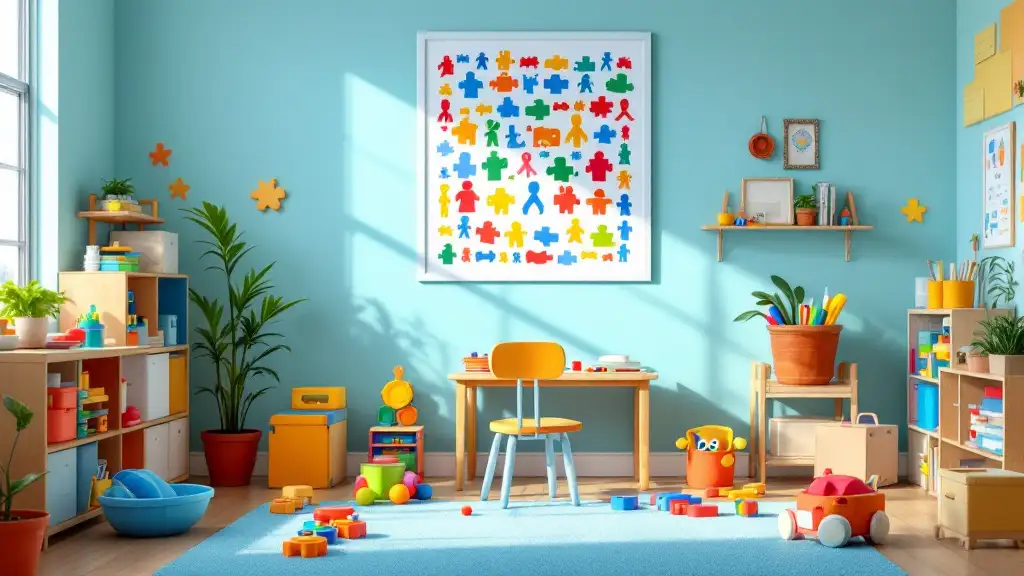
Autism Screening Tools For Early Childhood

The Role Of Physical Exercise In Autism Therapy

Best Strategies For Supporting Autistic College Students

The Role Of Technology In Autism Early Detection

Sensory-Friendly Classroom Design Ideas For Autistic Students

The Role Of Speech Therapy In Building Social Communication Skills

Best Strategies For Handling Autistic Burnout In Adults

Autism And The Importance Of Predictability In Routine

Autism And Peer Education: Teaching Acceptance In Schools

Best Practices For Sensory-Friendly Libraries And Reading Rooms

Self-Advocacy Skills For Autistic Adults

The Role Of Technology In Autism Peer Communication

Promoting Physical Activity In Children With Autism

How To Prepare Autistic Children For Medical Procedures

The Role Of Social Media In Autism Advocacy And Awareness

The Impact Of Sensory Rooms In Public Facilities For Autism

How To Create An Autism-Friendly Holiday Celebration

Best Practices For Inclusive Education For Autistic Students

Autism And Mental Health: Recognizing Signs Of Distress

Best Practices For Sensory-Friendly Waiting Rooms

The Role Of Teachers In Early Autism Red Flag Identification

Autism-Friendly Housing Design Features

Autism-Friendly Housing Design Features

How Environmental Modifications Improve Autism Outcomes

Autism And Technology-Based Learning Tools

Supporting Autistic Children Through Changes In Routine

The Link Between Autism And Working Memory Challenges

Best Practices For Autism-Friendly Cooking Classes

Autism And The Benefits Of Structured Music Lessons

Best Books To Teach Kids About Autism Acceptance

Sensory Diets And Their Benefits For Autism Management

How To Prepare Autistic Teens For Driver’s Education

How To Teach Autistic Teens About Healthy Relationships

The Role Of Visual Prompts In Building Daily Habits For Autism

Addressing Sleep Regression In Children With Autism

Understanding Social Stories And How They Help Autistic Children

Navigating Insurance Coverage For Autism Therapy Services

How To Prepare Autistic Adults For Independent Travel

Supporting Autistic Individuals In Volunteer Work

How Mindfulness Practices Can Support Autism Well-Being

Understanding Hyperfocus And Special Interests In Autism

Understanding Stimming As A Self-Regulation Tool

Sensory-Based Interventions For Autism At Home

Best Ways To Introduce Self-Advocacy In Autistic Teens

Best Ways To Support Autistic Employees In Customer Service Roles

Best Practices For Autism-Friendly Volunteer Programs

Autism And The Benefits Of Sensory Play For Emotional Growth

Autism And Strategies For Building Peer Relationships

Understanding How Autism Affects Memory Processing

Autism And Strategies For Building Coping Skills In Teens

The Role Of Parent Training In Autism Intervention Programs

Autism-Friendly Workplace Accommodations

Using Visual Timers For Autism Time Management

What Is ABA Therapy?

Autism and Sleep

Do Plastic Toys Cause Autism?

Autism Facial Expressions

Autism and Motor Skills
We’re All About You, Your Family, and Your Child

